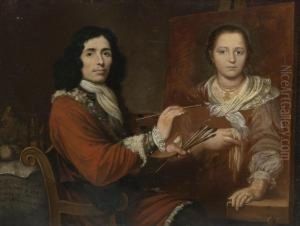Giulio Quaglio I Paintings
Giulio Quaglio the Elder, often referred to as Giulio Quaglio I to distinguish him from members of his family who were also artists, was an Italian painter and architect from the late 17th and early 18th centuries. Born in Laino, a small town in the Duchy of Milan, in 1643, he was part of the Quaglio dynasty, a family of Italian painters and architects known for their involvement in stage design, fresco painting, and architecture.
Quaglio started his artistic career under the guidance of his family members, who had established a reputation in the Lombardy region. He is particularly noted for his work in fresco painting, contributing to the ornate and expressive style characteristic of the Baroque period. His works often featured religious and mythological themes, aligning with the tastes and demands of the time.
Throughout his career, Giulio Quaglio I was actively engaged in numerous projects across Northern Italy and Central Europe. He became well-known outside of Italy and spent a significant part of his career in the lands that are now part of Slovenia. One of his most notable contributions was to the frescoes in the Ljubljana Cathedral in Slovenia, where he painted scenes from the Old Testament on the dome and the arch above the presbytery between 1703 and 1706.
His work is characterized by dynamic compositions, a rich color palette, and a skillful rendering of light and shadow, all of which demonstrate the influence of the Baroque style. Beyond painting, Giulio Quaglio I was also involved in architectural projects, although his contributions in this field are less documented and overshadowed by his fresco work.
Giulio Quaglio the Elder's death occurred in 1716, but his legacy continued through his descendants, with several of his children and relatives becoming painters and architects who contributed to the Baroque aesthetic in the regions where they worked. His work remains an important part of the artistic heritage of both Italy and Slovenia, reflecting the cultural exchange between these regions during his lifetime.
